Two-mark Treehoppers 2019
Martha O'Kennon
When I was a little girl, I first saw in a book that I must have gotten out of the library a picture of an amazing insect. It was shaped like a thorn and this apparently camouflaged it where it sat on a twig. I still remember saying to myself, I know I'll never see such a thing. And throughout my younger life I never did see one. But about 25-30 years ago, John Hart gave me one of his redbud saplings, and I planted it and watched it slowly grow into a tree with lovely purplish-pink flowers in the springtime.
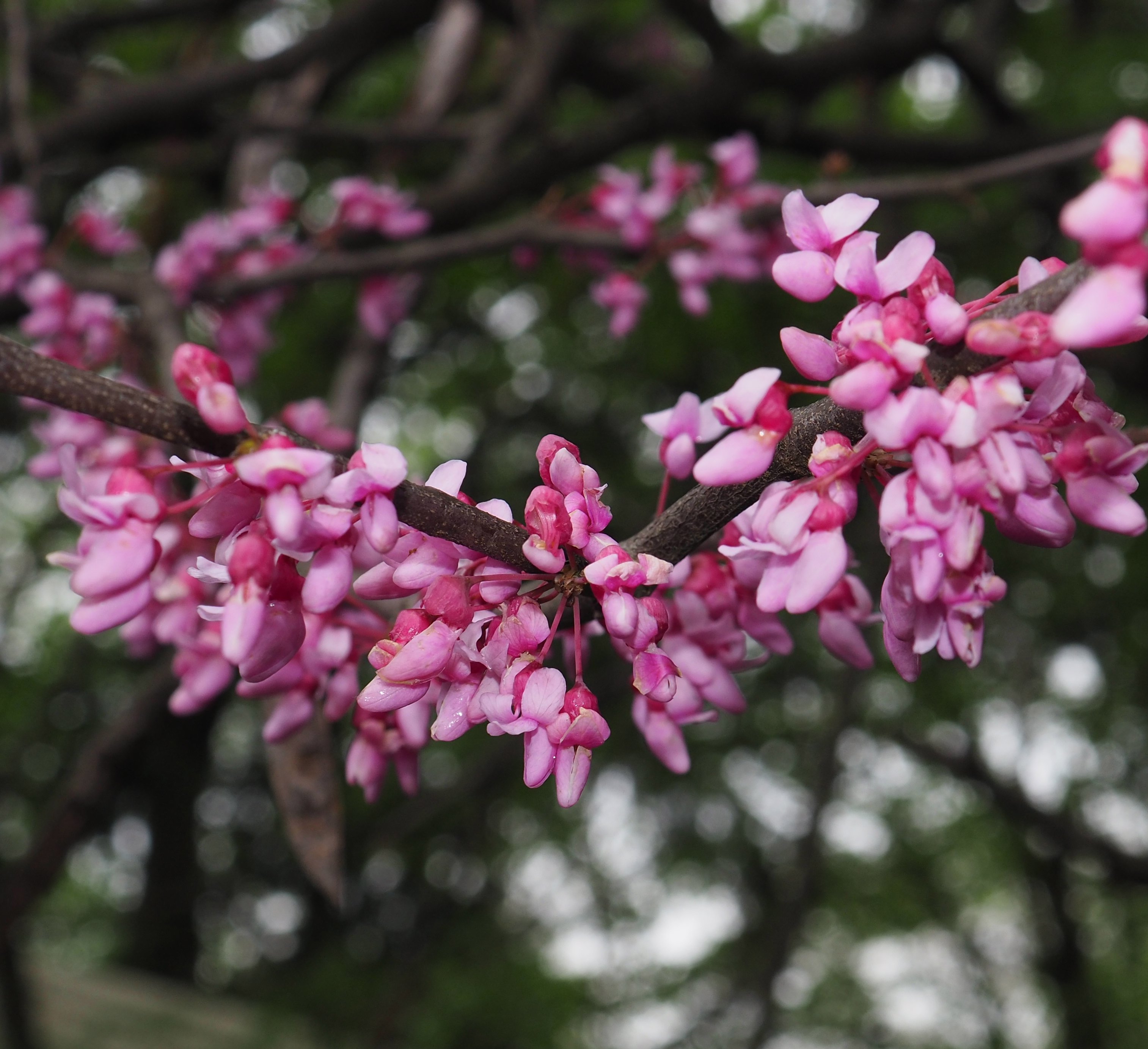
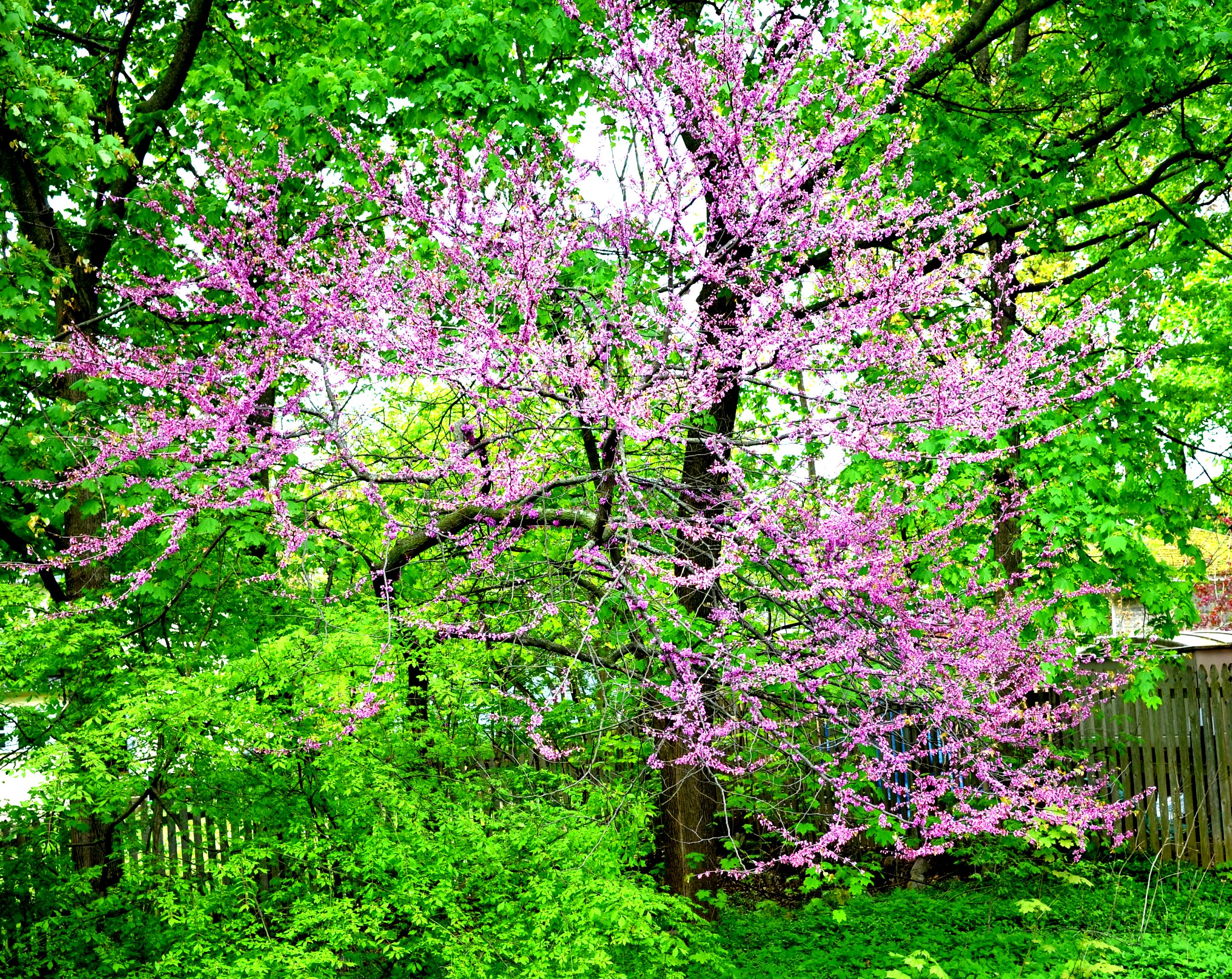
When I retired in 2004, I got my first digital camera, and for a few years I kept replacing it with other point-and-shoot cameras. Each one had more megapixels and I began to be able to take pictures of smaller and smaller insects. One day in 2015, I saw this little bug and it DID look like a little black thorn with two yellow dots on its back. Later I saw another one with a strange-looking little creature which I finally figured might be a nymph of this same species. Two days after spotting the first adult, I suddenly saw a bright bluish-green adult next to an empty nymphal shell. Apparently they look like this at first and then slowly turn black. (Later I noticed that the yellow dots are yellow from the beginning and stay yellow.)
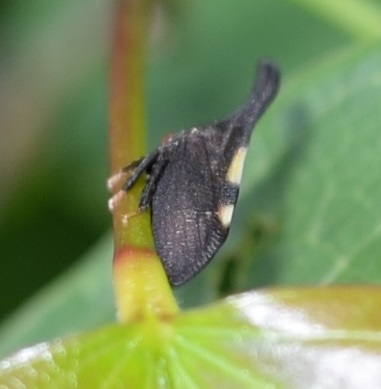

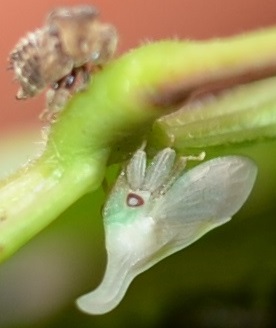
If you find a few nymphs, you might see that they are slightly different color combinations. I think they are different ages since hatching from their eggs. The ants tap into the tree to eat its sap, and produce a sweet liquid called "honeydew". You might see an ant or two living among the nymphs. Ants LOVE this honeydew. In the second picture you see an ant "milking" one of the nymphs. The ant has just licked up that big drop of liquid. What do the nymphs get out of this relationship? I asked Andy Hamilton, a Treehopper researcher in Canada, if the ants licking the nymphs kept them cleaner. Yes, he said, that keeps them from catching diseases like fungus infections, and also the ants scare off other predators. One day, I disturbed a branch with ants and nymphs, and suddenly the nymphs took off running - I'd never seen them move a hair before - and their ant began to HERD them to keep control of them. Here's a picture of an ant chasing a nymph. Both those critters can RUN!
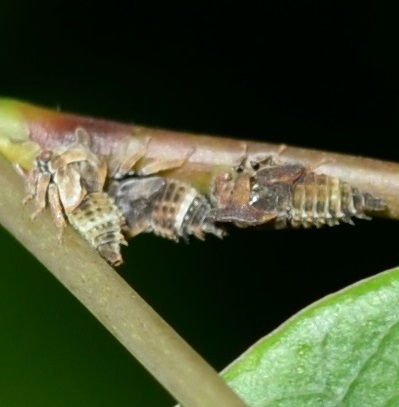
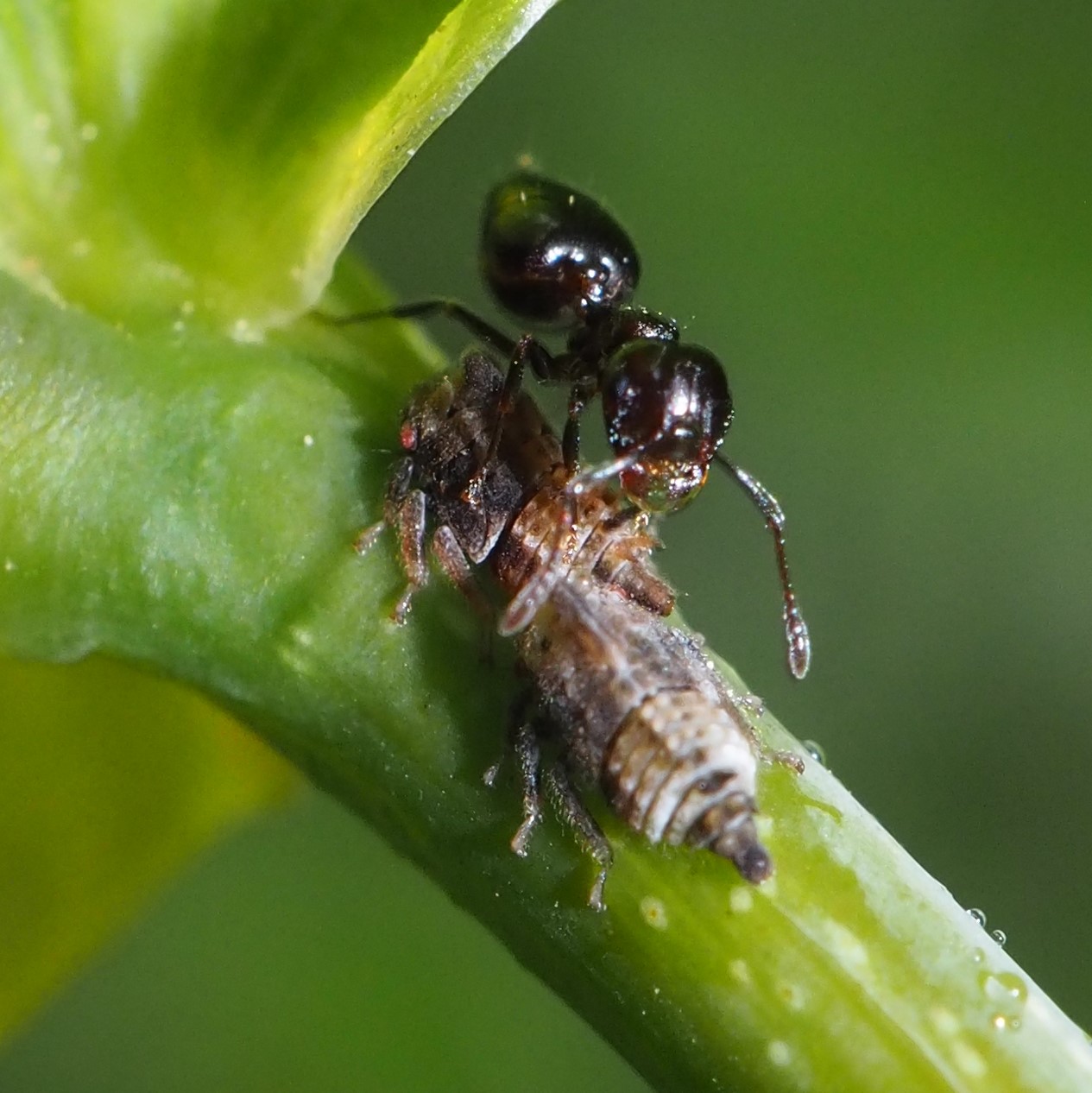
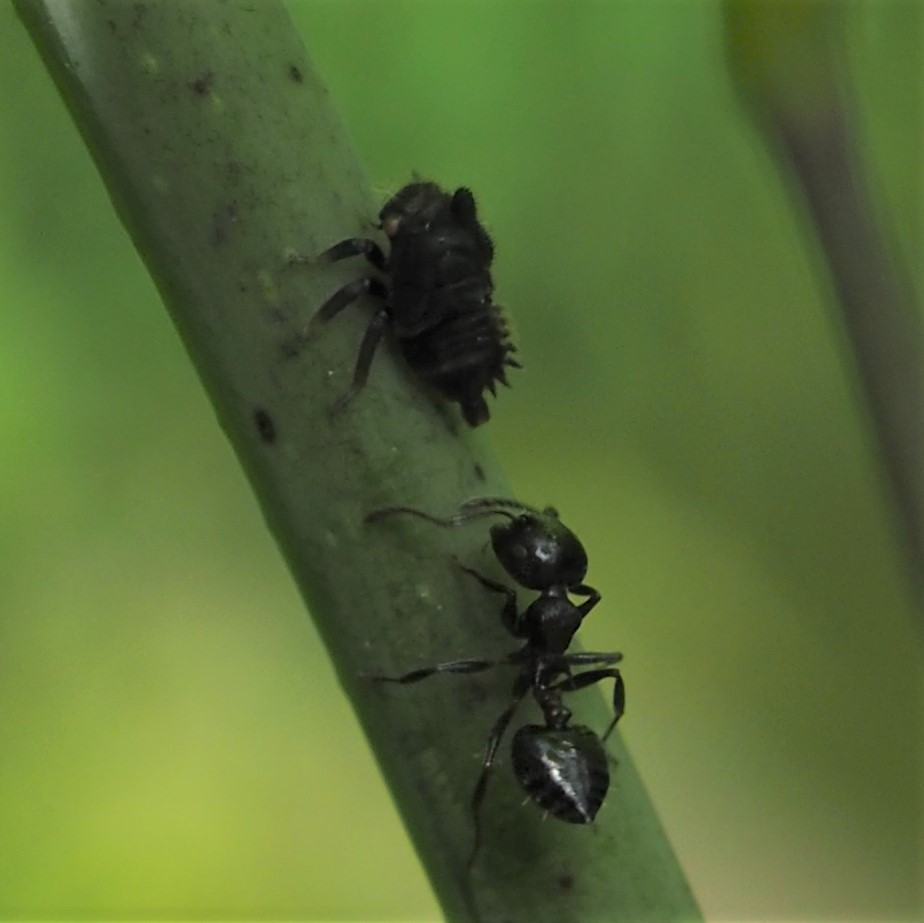
This year Dr. Hamilton asked me to collect some of these treehoppers, some males especially, and maybe a nymph or two. He wanted to study their anatomy and also their DNA to try to relate them to other kinds of treehoppers. He already knew that there were several species of treehoppers that so far had been sharing a name, but the ones that live on one kind of tree, like walnut or redbud, don't eat the other trees. It seems there had been some joint evolution of the bugs and the host plants, so that each bug prefers its own kind of tree, so some speciation had already taken place.
So I started looking for nymphs as early as possible. They are very tiny and don't really stand out much from the trees. The good news to this story is that the ants show up pretty soon after the nymphs hatch, and the ants DO stand out. So I went out with my trusty camera and took a few pictures of ants in the redbuds. To my delight, when I cropped the pictures from June 8, I could SEE a few nymphs with the ants. The younger nymphs seemed to be tended by smaller species of ants. So the first ones I found, in one of the saplings from the Mother Tree, were tended by Acrobat Ants, a genus of ants with an abdomen (gaster) shaped like a heart. When I started finding nymphs and ants in the Mother Tree, the ants were Eastern Black Carpenter Ants, a MUCH larger ant. Here are some nymphs with the Acrobats, and some others with the Carpenters. You can spot the heart-shaped gaster in picture 1 and the golden setae (hairs) on the gaster of the Carpenter in pictures 2 and 3. It didn't take very long for the nymphs to suddenly become adults. Almost overnight (well, more like like three weeks) with teenagers! On June 29 I had shot this picture of the ant and the nymph at the bottom and didn't see the fuzzy adult at the top left until cropping time.
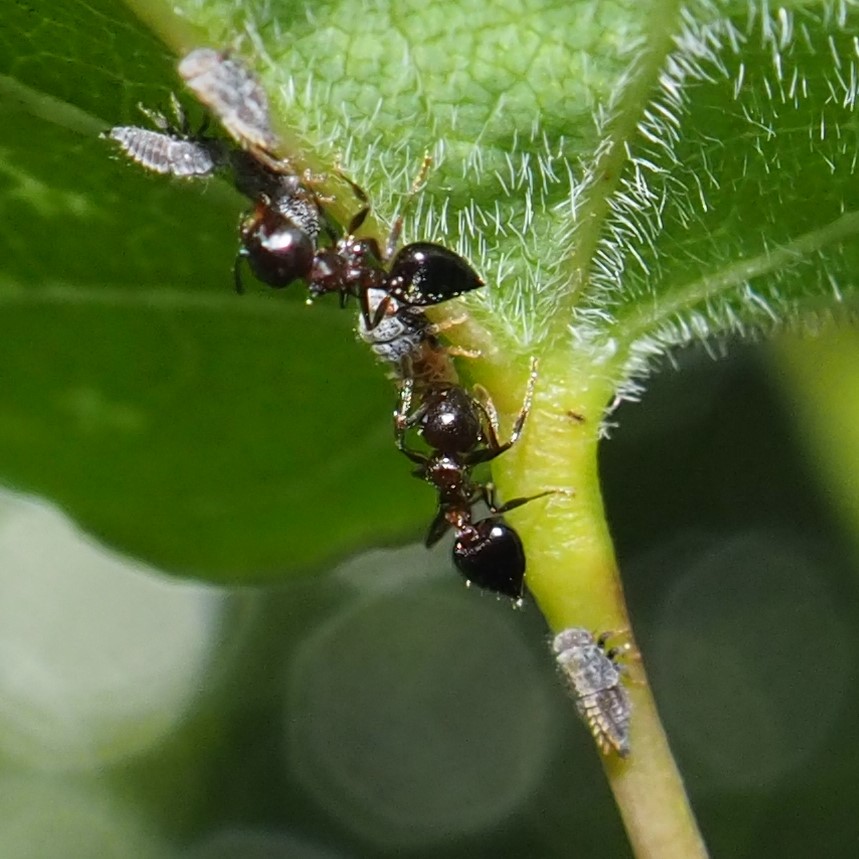
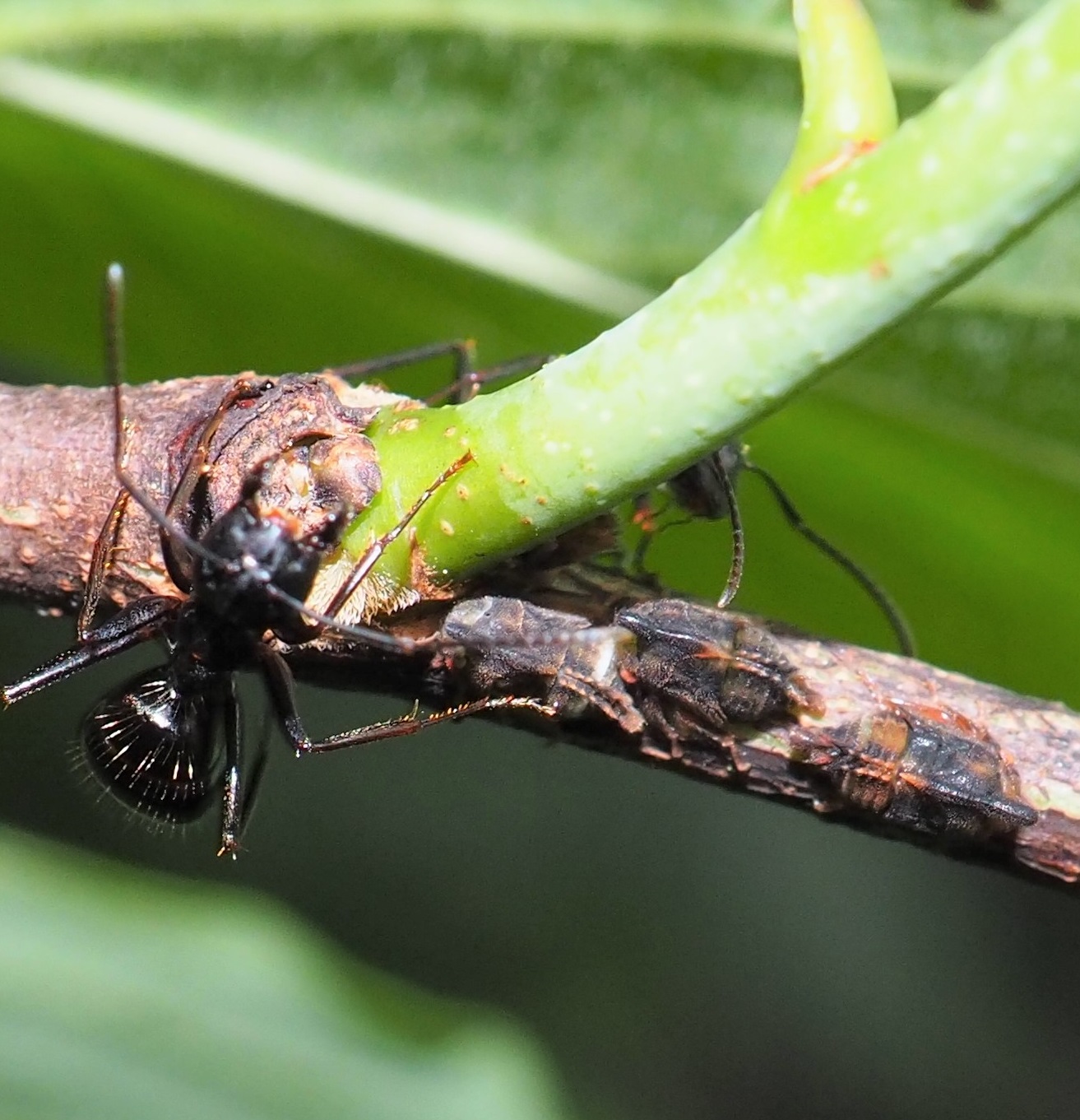

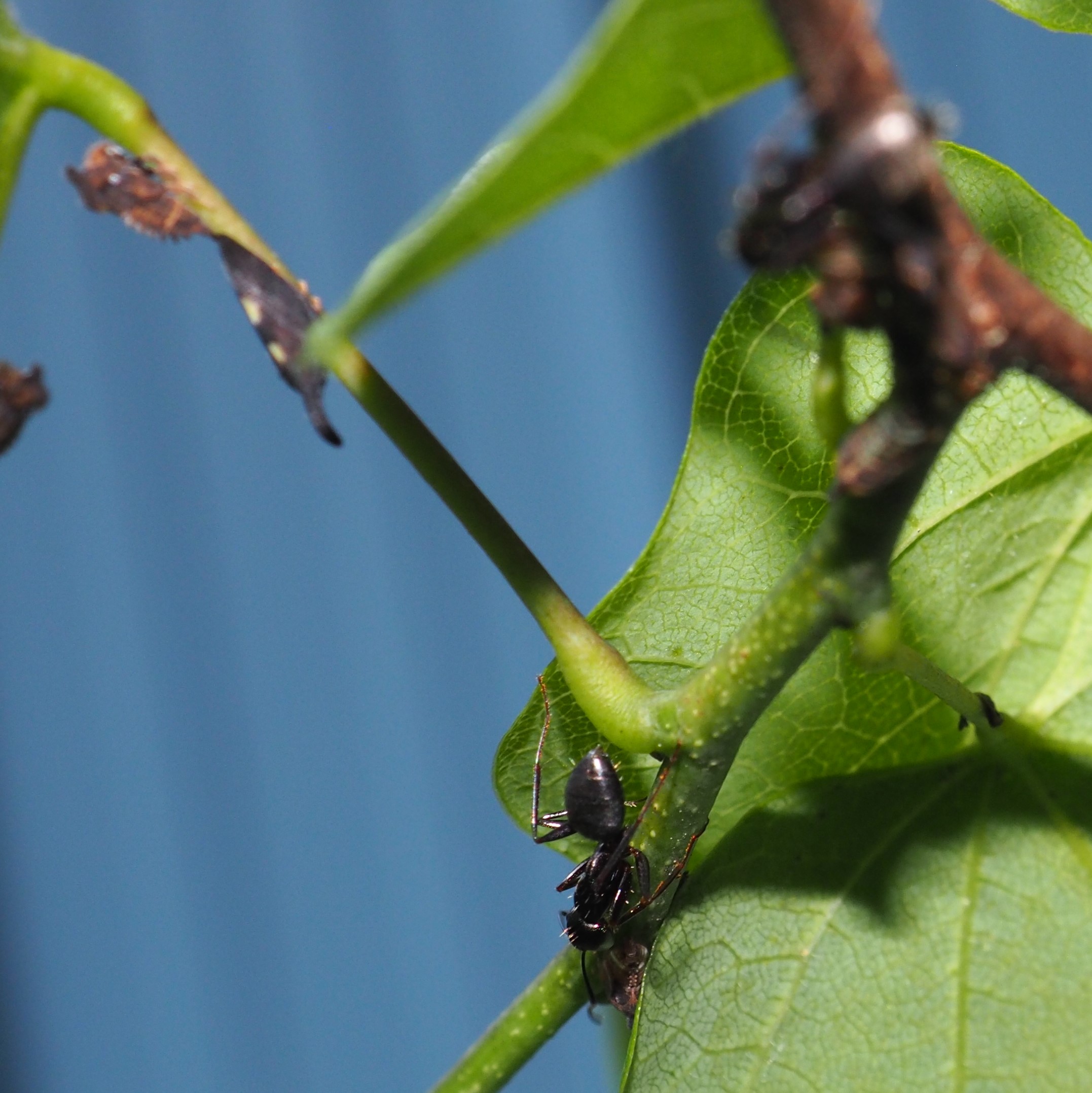
From then on, more adults hatched and I started gathering stems with nymphs and adults (that's how I annoyed the ants and nymphs above). I kept them in plastic food containers, a few bugs at a time with a stem and a few leaves. I'd been told to wait a couple of days so that the males would have a chance to mature enough to give Andy the information he was looking for. So as the days went by, I started freezing the specimens in one container after another until I had almost twenty specimens, dated by the day they went into the freezer. Ken Saville in Biology gave me tiny shipping vials, into each of which I inserted about 3 or 4 bugs with little pieces of toilet paper to keep them from bumping into each other. I packed them up into a box with padding so that the vials didn't rattle on each other. What with Canadian customs procedures, it took about 3 weeks to get them to Andy.
He set to work and in just couple of days he got an interesting result. I had figured that my "guys" would be shown by DNA to fit into the species of Redbud eaters, but to my shock he said that they turned out to be a hitherto unknown species, and they would be named after me, Membracis okennonae. To my shock and awe and amazement and joy. I'd like to say to kids who get interested in bugs and take it seriously enough to photograph or draw or describe in writing what they see, you just never know what you'll find.
If you are a kid or an old lady, nature is a terrific joy. One thing you can do is to encourage our leaders to stop burning fossil fuels and to sponsor solar and wind energy. Do everything you can do to keep this treasure we call the Earth spinning the way it was supposed to do.
Note: on August 16, 2020, I finally found when the Hoppers lay their eggs. Now to wait for next season!
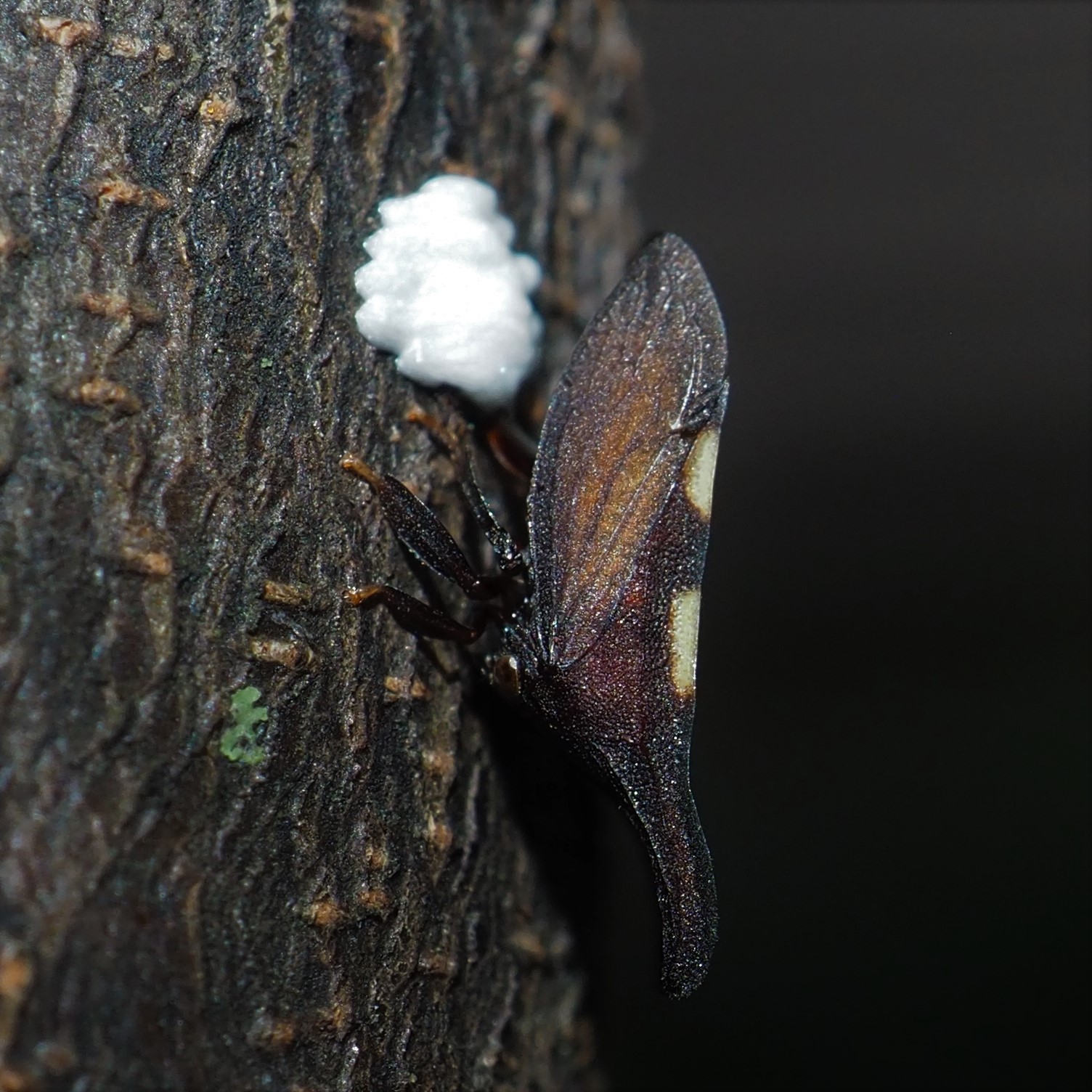
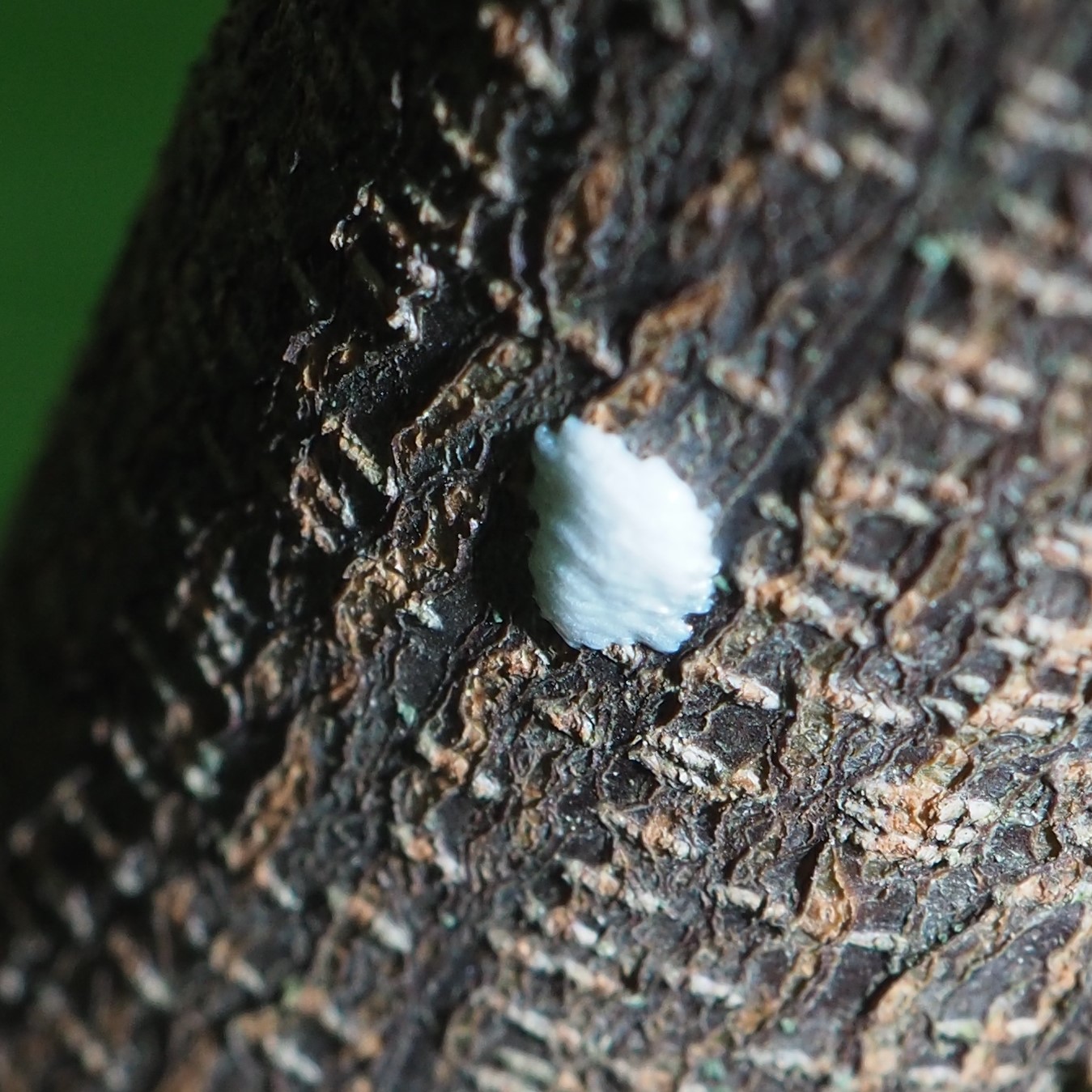
But on that same day, I found someone else who was enjoying the Two-mark Treehopper eggs: a Long-legged Fly who was digging into the egg mass, and excreting a yellowish drop. This may be a kind of parasitism.
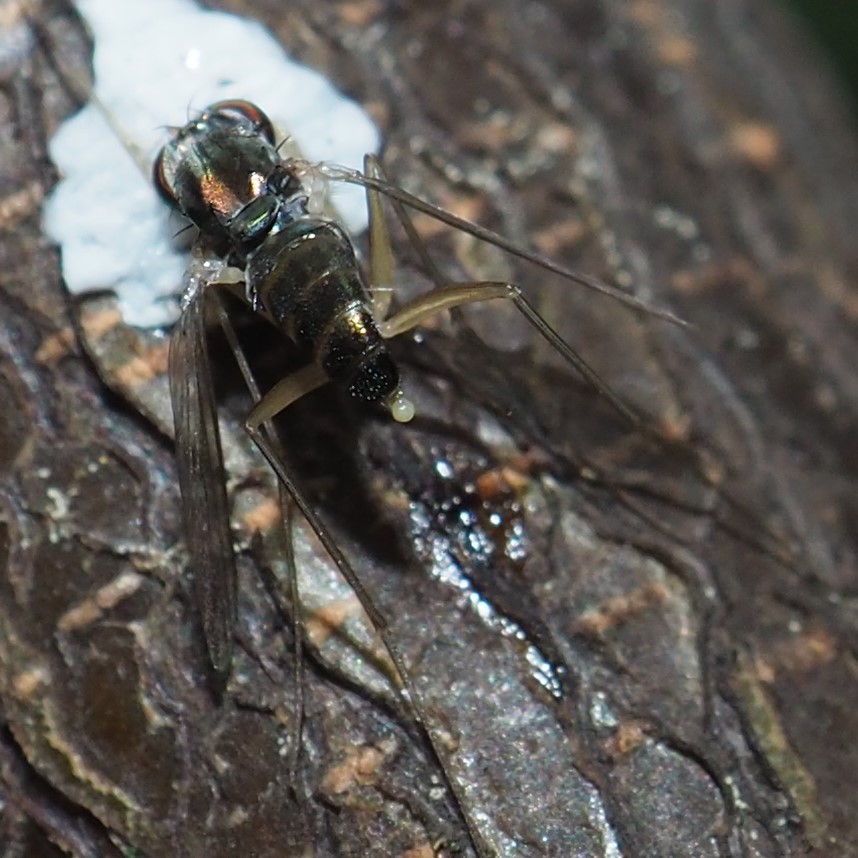

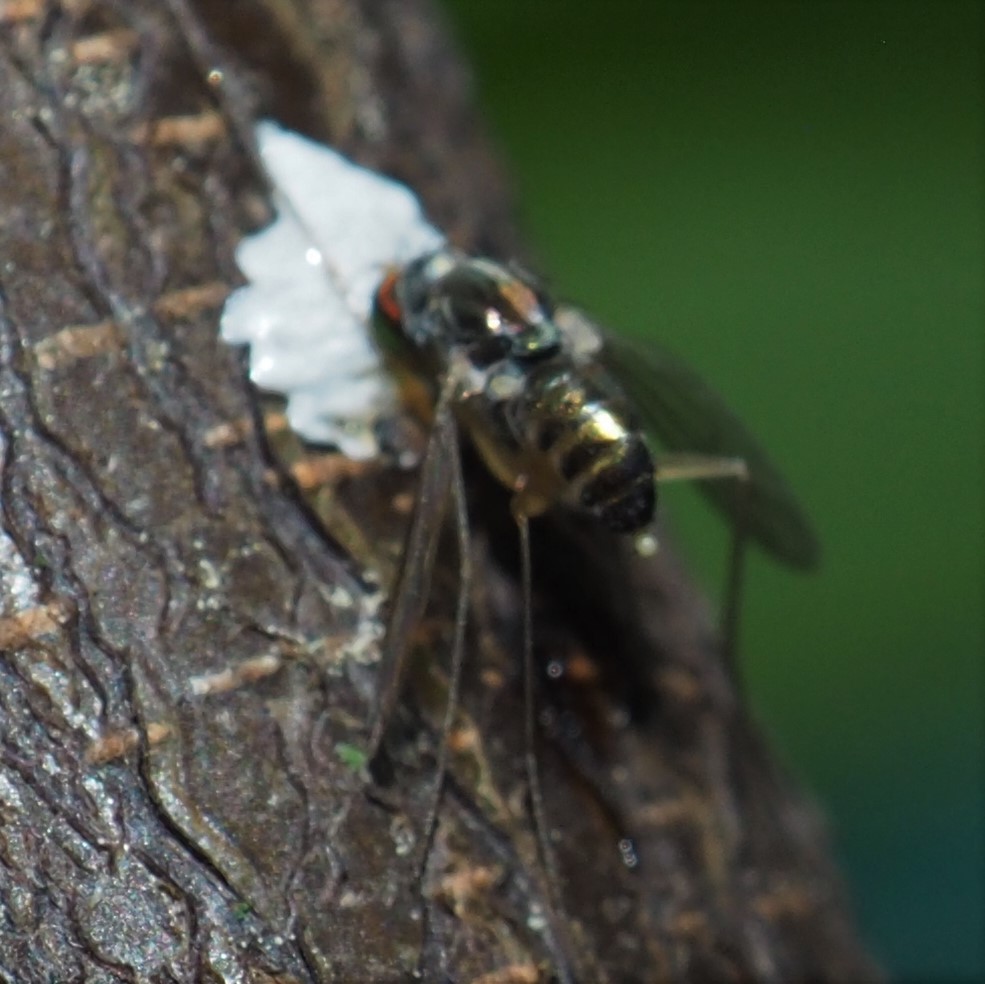
Back to Environment
copyright Martha O'Kennon 2021


















